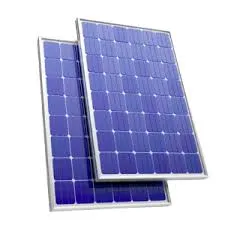The Impact of Cloudy Weather on Solar Panel Performance and Efficiency
Solar Panel Efficiency on a Cloudy Day
As the world becomes increasingly aware of the need for sustainable energy solutions, solar panels have emerged as a leading technology in harnessing the sun's energy. However, many potential users are concerned about the efficiency of solar panels on cloudy days. Understanding how solar panel efficiency is affected by different weather conditions is essential for making informed decisions about solar energy investments.
The Basics of Solar Panel Efficiency
Solar panel efficiency refers to the ability of a solar panel to convert sunlight into usable electricity. This efficiency is typically expressed as a percentage, representing the proportion of sunlight that is converted into electrical energy. For instance, a solar panel with 20% efficiency converts 20% of the sunlight it receives into electrical energy, while the remaining 80% is lost as heat or reflected light.
Solar panels are designed to capture solar energy effectively, even in less than ideal conditions. Their efficiency primarily depends on the type of technology used, including monocrystalline, polycrystalline, and thin-film solar cells. Among these, monocrystalline panels tend to have the highest efficiency ratings, making them a popular choice for residential and commercial installations.
Impact of Cloud Cover
It’s a common misconception that solar panels are useless on cloudy days. While it's true that solar irradiance—the power per unit area received from the sun—decreases when clouds cover the sky, solar panels can still generate electricity. In fact, studies have shown that solar panels can operate at approximately 50-80% of their rated capacity under overcast conditions.
The efficiency drop on cloudy days varies depending on several factors, including the thickness of the cloud cover, the angle of the sun, and the efficiency of the solar panel technology itself. Thin and wispy clouds can actually reflect and scatter sunlight, allowing for increased sunlight penetration and potentially yielding favorable conditions for solar energy production.
The Role of Diffused Light
solar panel efficiency on a cloudy day

On cloudy days, the sunlight that reaches the earth's surface is primarily diffused light—sunlight scattered by clouds and atmospheric particles. Although diffused light is less intense than direct sunlight, solar panels can still convert it into electricity. Modern solar technology is designed to harness a wider spectrum of light, which includes the diffused light available on cloudy days.
In fact, some studies have indicated that solar panels equipped with technologies to optimize the capture of diffused light can perform unexpectedly well in overcast conditions. Such panels often include features like anti-reflective coatings and advanced cell configurations that maximize light absorption.
Long-Term Energy Production
For individuals and businesses considering solar energy, it's essential to evaluate solar panel productivity not just based on sunny days but also considering the long-term energy production over the course of a year. While sunny days are ideal for solar energy generation, months with more cloudy days can still contribute significantly to overall energy production.
Statistics show that regions with frequent overcast conditions can achieve substantial energy generation throughout the year, particularly if they install high-efficiency panels. As solar panel efficiency continues to improve through advancements in technology, the effectiveness of solar panels in lower light conditions is also expected to rise.
Conclusion
In summary, while cloudy days do reduce solar panel efficiency compared to fully sunny days, they do not make solar energy generation impossible. With the right technology and proper installation, solar panels can effectively harness the available light, even when the sun is obscured. Understanding the capabilities of different types of solar panels and recognizing the potential for energy production under various weather conditions can help consumers make informed decisions.
As the solar industry evolves, ongoing research and development will likely yield even more efficient technologies that will further mitigate the impact of cloudy weather on solar energy generation. For those considering solar power as a viable energy source, it is vital to recognize the potential benefits and take into account the long-term advantages of investing in solar technology, regardless of the typical weather patterns in their region. With proper planning and awareness, solar energy can serve as a reliable and sustainable energy solution, even on the cloudiest days.
-
Unlocking Energy Freedom with the Off Grid Solar InverterNewsJun.06,2025
-
Unlock More Solar Power with a High-Efficiency Bifacial Solar PanelNewsJun.06,2025
-
Power Your Future with High-Efficiency Monocrystalline Solar PanelsNewsJun.06,2025
-
Next-Gen Solar Power Starts with Micro Solar InvertersNewsJun.06,2025
-
Harnessing Peak Efficiency with the On Grid Solar InverterNewsJun.06,2025
-
Discover Unmatched Efficiency with the Latest String Solar InverterNewsJun.06,2025







